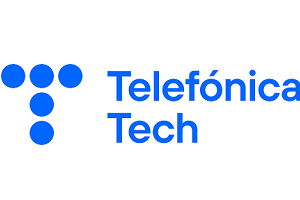Madrid, Spain – Telefónica Tech strengthens its value proposition with the creation of a product category, sustainable mobility, which will include the portfolio of the preventive security technology company LIVALL. To this end, both companies have signed an agreement whereby Telefónica Tech becomes a partner of LIVALL to provide global IoT connectivity to its smart helmets and market its products in all Telefónica footprint.
Telefónica Tech will provide its IoT solution to globally connect LIVALL’s flagship BH51M Neo smart helmet, including both the connectivity technologies available in each market (2G, 3G, LTE, LTE-M and NB-IoT) and its Kite managed connectivity platform that allows devices to be controlled and monitored in real time and remotely from anywhere in the world. Kite will also allow LIVALL to extract data from devices through its IoT Data Ready functionality, facilitating integration with its IoT platform.
The agreement signed by the two companies will significantly evolve the product from the current mainly Bluetooth-based connectivity to IoT technology, and will open up numerous new business opportunities in the enterprise world. The new IoT connected smart helmet will be in the market on a global scale and will have the ability to capture relevant user information and manage it on Telefónica Tech’s Kite platform with advanced analytics to help companies make better business decisions.
Telefónica Tech will also make available to LIVALL its The Thinx laboratory, the equipped IoT environments in the world, to simulate and verify with the help of an expert technical team the real operation of the connectivity in the helmets and thus guarantee the quality of the product before mass deployment. Telefónica Tech is also committed to commercialise the LIVALL portfolio both in the business segment (B2B) and among consumers (B2B2C) through Telefónica’s channels in all the markets in which it is present.
Gonzalo Martín-Villa, CEO of IoT and big data at Telefónica Tech, says: “We are very proud to expand our portfolio with an innovative and pioneering product in the market, such as the LIVALL smart helmet connected with our IoT technology, aimed at promoting safer and more sustainable mobility. The incorporation of connectivity and data analytics will allow the business world to have greater traceability of its activity and be able to make better decisions to optimise the business”.
In the words of Manu Marín, investor, technology guru and CEO of LIVALL Europe, “the connected helmet is the logical evolution of the smart helmet concept, of which we are pioneers and leaders, towards the future of sustainable, efficient and above all safe transport. This collaboration with Telefónica Tech and its immense experience in networks is a guarantee of success in terms of technology, but also in terms of making it available to the greatest number of users and companies in the shortest possible time, making the future of transport ever more present and real”.
Goal: safer and more sustainable businesses
LIVALL’s connected smart helmet eliminates the need to be tethered to a smartphone to access connectivity functionalities and enables numerous use cases related to driver safety, B2B location and communication, and smart cities.
BH51M Neo introduces LIVALL’s three levels of enhanced safety: visibility, communication and rescue. It features turn signals and intelligent position and brake lights that ensure maximum visibility of the user’s movements on the road, significantly increasing safety. It also has Bluetooth, stereo speakers and a noise-cancelling microphone and a wide range of infotainment features.
The BH51M Neo’s gravity and accelerometer sensors are able to detect an accident followed by incapacitation (e.g. by stunning or obstruction) and activate its autonomous SOS system, which alerts the user’s emergency contacts of the accident and provides them with the location via GPS.
The connectivity and functionalities offered by the BH51M Neo helmet offer numerous benefits for sectors such as mobility and industry. For example, scooter and bike sharing companies and food delivery companies would have constant, real-time communication with the headset: from instant hands-free customer or employee service to the collection of data on route efficiency and road behaviour to help generate optimised guidelines that increase safety and efficiency.
This ability to connect independently could also have other highly advanced applications, such as exchanging automatic information with other actors and elements on the road in real time (cars, traffic lights, radar, safety and traffic monitoring systems). This functionality could generate proximity alerts between bikes and other vehicles, as well as record evidence in case of accidents and collect data to help the administration identify black spots and improve the road network, and real-time information to help the user identify faster and safer alternative routes.
Comment on this article below or via Twitter: @IoTNow_OR @jcIoTnow







